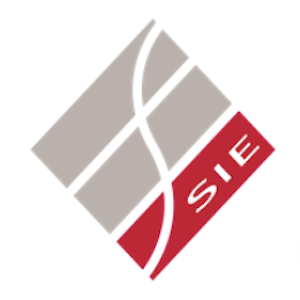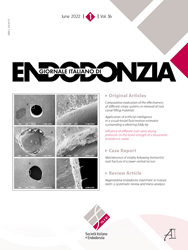Original Articles
Vol. 36 No. 1 (2022)
Microbiological analysis of root canals of primary teeth with pulp necrosis caused by caries or trauma

Publisher's note
All claims expressed in this article are solely those of the authors and do not necessarily represent those of their affiliated organizations, or those of the publisher, the editors and the reviewers. Any product that may be evaluated in this article or claim that may be made by its manufacturer is not guaranteed or endorsed by the publisher.
All claims expressed in this article are solely those of the authors and do not necessarily represent those of their affiliated organizations, or those of the publisher, the editors and the reviewers. Any product that may be evaluated in this article or claim that may be made by its manufacturer is not guaranteed or endorsed by the publisher.
Received: 10 November 2021
Accepted: 24 February 2022
Accepted: 24 February 2022
690
Views
881
Downloads












